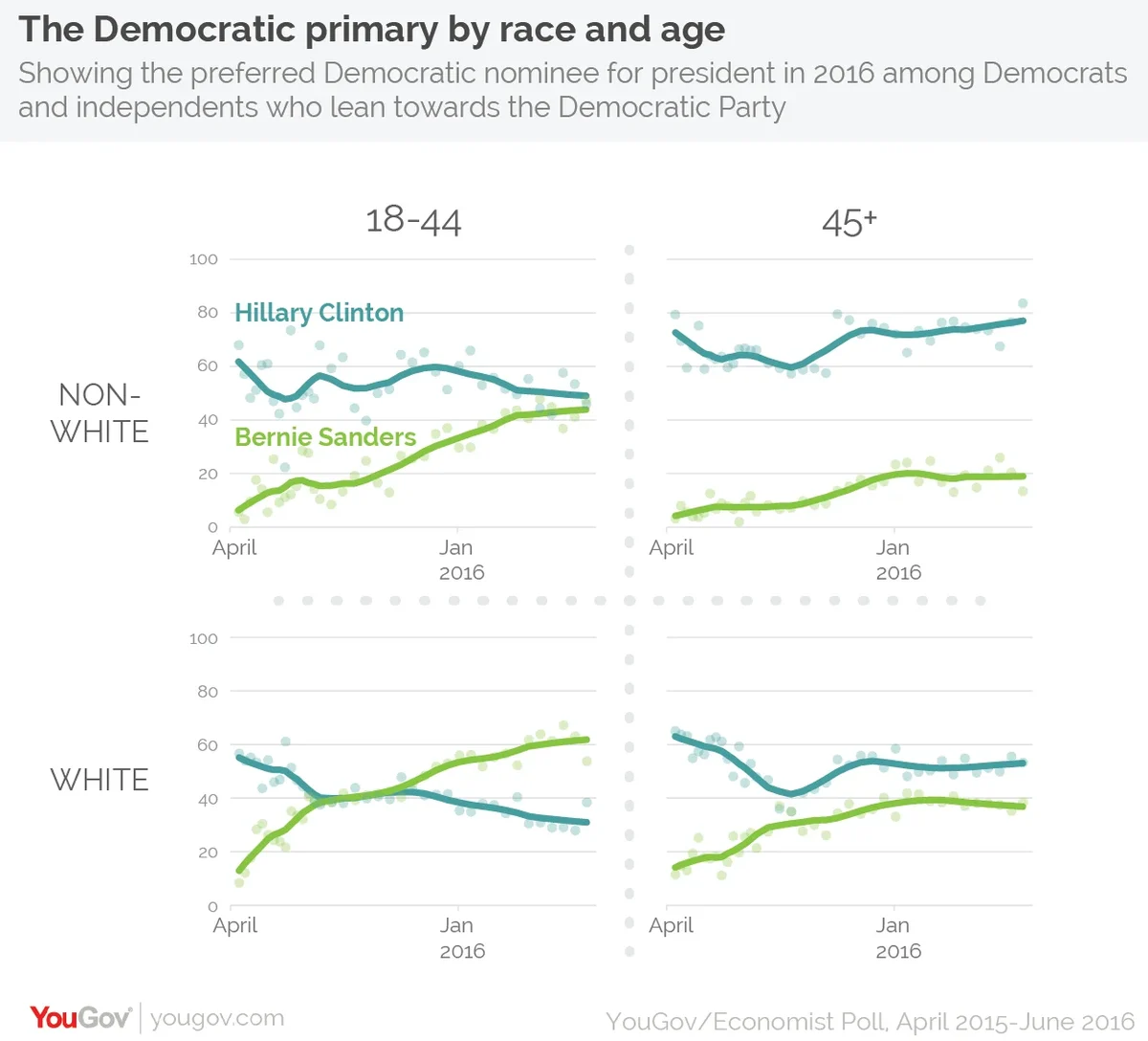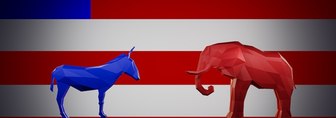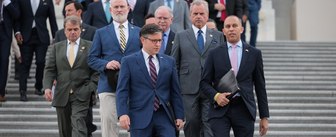Bernie Sanders fought to a near draw with young people of color. Hillary Clinton held onto a solid lead with older whites.
Now that Hillary Clinton is the presumptive nominee according to the AP and numerous television networks, albeit unexpectedly soon, attention will increasingly turn towards the general election. But nobody expected Bernie Sanders to rise as high as he did, and his campaign is assured a prominent place in the history of primary runners-up.
There will be plenty of thought and analysis going into that history, but one preliminary note is just how prominently racial and generational differences played in distinguishing Clinton supporters from Sanders supporters. As I’ve noted before, these divisions largely endured throughout the primary. One interesting subgenre of this point, however, is how they intersect: Bernie Sanders had extraordinary success with young people, and Hillary Clinton repeatedly benefited from huge margins among people of color, particularly African-Americans – but how did Clinton do with older whites, or Sanders with younger non-whites?
The graphic below illustrates just that, using national YouGov/Economist polling on the nomination preferences of Democrats and Democrat-leaning independents. It shows how Sanders fought Clinton to a near draw with people of color between the ages of 18 and 44, narrowing steadily from a 33-point deficit in mid-October 2015, after Joe Biden said he would not run, to around 5 points today*. Meanwhile, Clinton held onto a modest but consistent lead with older whites until the very end. She now leads with them by 16 points.
Among whites aged 44 and below, Sanders when from a narrow 44%-42% lead in October to 62%-31% in June. Clinton’s lead among non-whites over the age of 45, on the other hand, was impressively consistent: she led Sanders 69% to 13% (+56) when Biden opted out and now leads by 77% to 19% (+58).

There are other ways of looking at generational and racial differences, of course. People often talk about under-30s, or Millennials, as a politically distinct group, and polling shows Sanders is even stronger with this group than under-45s overall. There are also very real differences between – and within – the ethnic and racial groups contained in “non-white”. But using simply these four larger groups provides more reliable data and goes some way to illuminate one of the most important demographic cleavages of the primary.
For example, the Sanders campaign's inability to connect with older voters in the same way as younger voters, whatever their race, helps to explain how he came up short – in exit polls, the over-45s often apprached or even exceeded 60% of the Democratic primary electorate. But the rapid growth of his support across a diverse range of young people is also a reminder of how important the Sanders coalition to the future of the Democratic Party.
*The exact percentages are based on the smoothed line seen in the chart. This is created using a type of analysis called a LOESS regression, rather than a simple rolling average.
Economist/YouGov poll archives can be found here.






